
Dean Lawrence Kamen is an American engineer, inventor, and businessman. He is known for his invention of the Segway and iBOT, as well as founding the non-profit organization FIRST with Woodie Flowers. Kamen holds over 1,000 patents.

Mechanical engineering is an engineering branch that combines engineering physics and mathematics principles with materials science, to design, analyze, manufacture, and maintain mechanical systems. It is one of the oldest and broadest of the engineering branches.

In medicine, a prosthesis, or a prosthetic implant, is an artificial device that replaces a missing body part, which may be lost through trauma, disease, or a condition present at birth. Prostheses are intended to restore the normal functions of the missing body part. Amputee rehabilitation is primarily coordinated by a physiatrist as part of an inter-disciplinary team consisting of physiatrists, prosthetists, nurses, physical therapists, and occupational therapists. Prostheses can be created by hand or with computer-aided design (CAD), a software interface that helps creators design and analyze the creation with computer-generated 2-D and 3-D graphics as well as analysis and optimization tools.
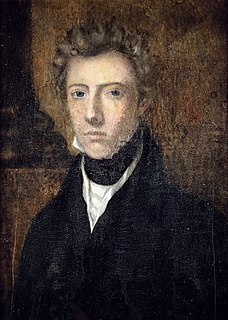
James Barry was a military surgeon in the British Army. Originally from the city of Cork in Ireland, Barry obtained a medical degree from the University of Edinburgh Medical School, then served first in Cape Town, South Africa, and subsequently in many parts of the British Empire. Before retirement, Barry had risen to the rank of Inspector General in charge of military hospitals, the second-highest medical office in the British Army. Barry not only improved conditions for wounded soldiers, but also the conditions of the native inhabitants, and performed the first recorded caesarean section by a European in Africa in which both the mother and child survived the operation.
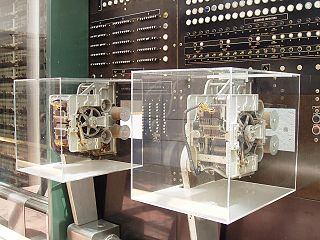
The Harvard Mark I, or IBM Automatic Sequence Controlled Calculator (ASCC), was a general-purpose electromechanical computer used in the war effort during the last part of World War II.
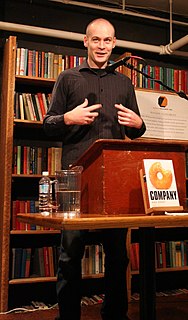
MaxBarry is an Australian author. He also maintains a blog on various topics, including politics. When he published his first novel, Syrup, he spelled his name "Maxx", but subsequently has used "Max".
The idea of self-replicating spacecraft has been applied—in theory—to several distinct "tasks". The particular variant of this idea, applied to the idea of space exploration, is known as a von Neumann probe, after the mathematician John von Neumann, who originally conceived of it. Other variants include the Berserker and an automated terraforming seeder ship.

Tik-Tok is a fictional character from the Oz books by American author L. Frank Baum. He has been termed "the prototype robot," and is widely considered to be one of the first robots to appear in modern literature, though the term "Robot" was not used until the 1920s, in the play R.U.R.
Biorobotics is an interdisciplinary science that combines the fields of biomedical engineering, cybernetics, and robotics to develop new technologies that integrate biology with mechanical systems to develop more efficient communication, alter genetic information, and create machines that imitate biological systems.
Prosthetics, the artificial replacement of organic limbs or organs, often play a role in fiction, particularly science fiction, as either plot points or to give a character a beyond normal appearance. Numerous works of literature, television, and films feature characters who have prosthetics attached.
Biomechatronics is an applied interdisciplinary science that aims to integrate biology and mechatronics. It also encompasses the fields of robotics and neuroscience. Biomechatronic devices encompass a wide range of applications from the development of prosthetic limbs to engineering solutions concerning respiration, vision, and the cardiovascular system.

The history of computer science began long before the modern discipline of computer science, usually appearing in forms like mathematics or physics. Developments in previous centuries alluded to the discipline that we now know as computer science. This progression, from mechanical inventions and mathematical theories towards modern computer concepts and machines, led to the development of a major academic field, massive technological advancement across the Western world, and the basis of a massive worldwide trade and culture.

The Brave Police J-Decker is the fifth series of the anime television meta Brave series (Yūsha) created by Takara and Sunrise. It aired in Japan from February 5, 1994 to January 28, 1995. Brave Police J-Decker returns the series to a subtly lighter tone, focusing more on the concept of "robot as human-built AI construct" emphasized by the previous season's series, The Brave Express Might Gaine. The series takes place in the fictional city of Nanamagari City.

A mechanical arm is a machine that mimics the action of a human arm. Mechanical arms are composed of multiple beams connected by hinges powered by actuators. One end of the arm is attached to a firm base while the other has a tool. They can be controlled by humans either directly or over a distance. A computer-controlled mechanical arm is called a robotic arm. However, a robotic arm is just one of many types of different mechanical arms.
Therdchai Jivacate is a Thai orthopedic surgeon and inventor known for his humanitarian activities in providing free prosthetic limbs to impoverished amputees, and for his development of techniques allowing low-cost, high-quality prostheses to be made from local materials. The activities of the Prostheses Foundation, which he founded in 1992 under royal sponsorship from the Princess Mother Srinagarindra, have expanded beyond the borders of Thailand to Malaysia, Laos, and Burma. Jivacate has established Thailand's first and only educational institution of occupational therapy at Chiang Mai University. He has also created an educational programme for children suffering from chronic diseases at Maharaj Hospital in Nakhon Ratchasima. In 2008, he was given the Ramon Magsaysay Award for Public Service.
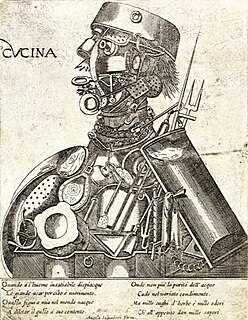
A cyborg —a portmanteau of cybernetic and organism—is a being with both organic and biomechatronic body parts. The term was coined in 1960 by Manfred Clynes and Nathan S. Kline.
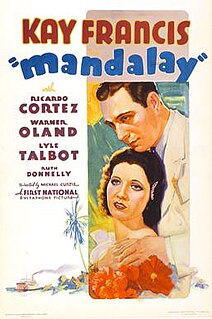
Mandalay is a 1934 American pre Code drama film directed by Michael Curtiz and written by Austin Parker and Charles Kenyon based on a story by Paul Hervey Fox. The film stars Kay Francis, Ricardo Cortez, Warner Oland and Lyle Talbot, and features Ruth Donnelly and Reginald Owen.
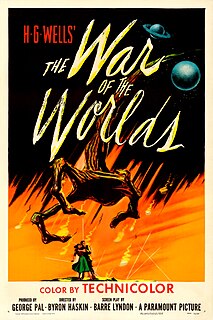
The War of the Worlds is a 1953 American science fiction film from Paramount Pictures, produced by George Pal, directed by Byron Haskin, and starring Gene Barry and Ann Robinson.













